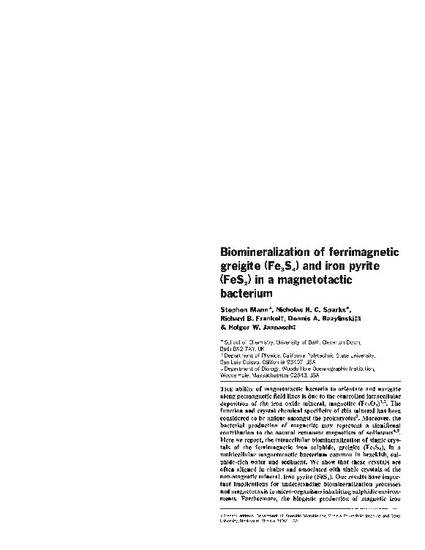
The ability of magnetotactic bacteria to orientate and navigate along geomagnetic field lines is due to the controlled intracellular deposition of the iron oxide mineral, magnetite (Fe3O4)1,2. The function and crystal chemical specificity of this mineral has been considered to be unique amongst the prokaryotes3. Moreover, the bacterial production of magnetite may represent a significant contribution to the natural remanent magnetism of sediments4,5. Here we report, the intracellular biomineralization of single crystals of the ferrimagnetic iron sulphide, greigite (Fe3S4), in a multicellular magnetotactic bacterium common in brackish, sulphide-rich water and sediment. We show that these crystals are often aligned in chains and associated with single crystals of the non-magnetic mineral, iron pyrite (FeS2). Our results have important implications for understanding biomineralization processes and magnetotaxis in micro-organisms inhabiting sulphidic environments. Furthermore, the biogenic production of magnetic iron sulphides should be considered as a possible source of remanent magnetization in sediments.
Available at: http://works.bepress.com/rfrankel/153/
